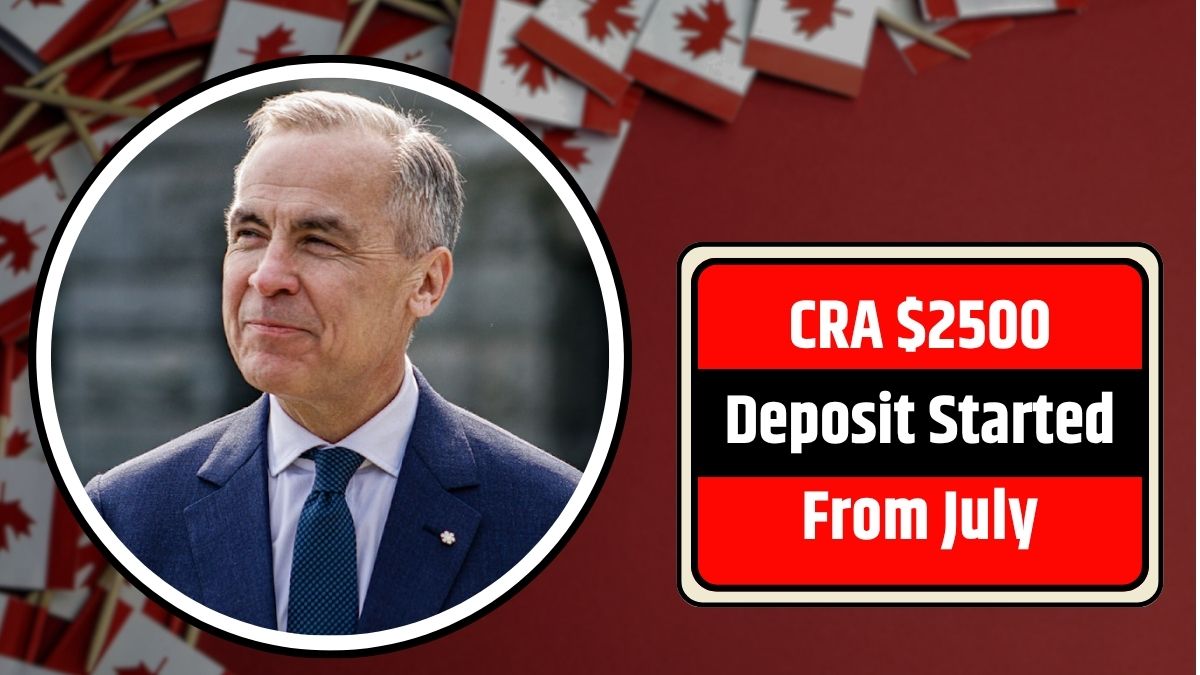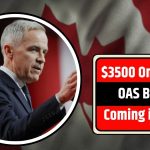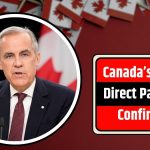If you’ve come across headlines claiming that the Canada Revenue Agency (CRA) is issuing a $2,500 payment, you’re not alone in wondering whether this is a new government benefit. However, while the claim is not entirely false, it’s also not a lump-sum cheque landing in your bank account.
Instead, the $2,500 figure refers to the combined monthly total that eligible Canadians—especially seniors—can receive from existing federal and provincial government programs. These programs are designed to provide financial stability to Canadians during retirement or periods of low income.
In this detailed guide, we break down exactly what the $2,500 payment refers to, who qualifies, and how to maximize your monthly benefits under current Canadian government schemes.
What Does the “$2,500 CRA Payment” Really Mean?
The $2,500 amount is not a new, one-time benefit or direct deposit. It’s a rough estimate of how much an eligible person might receive per month from a combination of several federal programs, most notably:
- Canada Pension Plan (CPP)
- Old Age Security (OAS)
- Guaranteed Income Supplement (GIS)
Together, these three benefits can provide over $3,300 per month in some cases. But realistically, most seniors receive between $2,100 and $2,500 monthly, depending on their income level, age, and contribution history.
Canada Pension Plan (CPP)
CPP is a monthly, taxable benefit paid to people who worked and contributed to the plan during their career. You’re eligible if you:
- Worked in Canada and made CPP contributions
- Are at least 60 years old
- Have applied for CPP through Service Canada
The maximum monthly CPP payment in 2025 is about $1,433, but most people receive less based on their earnings and contribution history.
Tip: Delaying CPP until age 70 can increase your monthly payout by up to 42%, making it a valuable strategy for long-term income planning.
Old Age Security (OAS)
OAS is available to Canadians 65 years and older and is based on residency, not work history. You may receive:
- $727.67/month if you’re aged 65–74
- $800.44/month if you’re 75 or older
To qualify, you must have:
- Lived in Canada for at least 10 years after age 18
- Met the 40-year residency threshold for a full pension
Note: If your annual income exceeds $90,997 in 2025, some of your OAS may be clawed back.
Guaranteed Income Supplement (GIS)
GIS is a non-taxable monthly payment for low-income seniors who already receive OAS. For 2025:
| Marital Status | Max Annual Income for GIS |
|---|---|
| Single | $22,056 |
| Married (both receive OAS) | $29,136 |
| Married (one receives OAS) | $52,848 |
GIS is renewed automatically each year based on your tax return, so it’s important to file your taxes annually even if you have no income.
Additional CRA and Government Benefits That May Add to the $2,500 Total
While CPP, OAS, and GIS make up the bulk of senior benefits, other programs may contribute to the monthly benefit total, including:
- Canada Child Benefit (CCB) – For families with children under 18
- GST/HST Credit – A quarterly credit for low-income households
- Climate Action Incentive – A payment available in certain provinces
- Provincial and Territorial Supplements – Such as income top-ups for seniors
Combined with federal benefits, these can push total payments close to or even above $2,500 monthly for eligible households.
When Are These Benefits Paid?
Understanding CRA payment schedules helps you budget effectively:
- CPP & OAS: Paid on the fourth Wednesday of each month
- GIS: Paid alongside OAS
- CCB: Issued on the 20th of each month
- GST/HST Credit: Sent quarterly—January, April, July, and October (usually on the 5th)
Tip: Set up direct deposit through CRA My Account or your bank’s website to avoid delays.
Delay CPP for Bigger Returns
Although you can start CPP at age 60, delaying benefits to age 70 increases your payment by 0.7% per month—a total of 42% more than if you started at 65.
File Your Tax Return Every Year
Many benefits—including GIS and GST/HST credits—are automatically renewed based on your tax return. Even if you owe no taxes, filing ensures you don’t miss out.
Keep Information Updated
Make sure your:
- Mailing address
- Direct deposit details
- Marital status
- Income sources
…are all current in your CRA profile. Mistakes or outdated data can cause benefit delays or disqualifications.
It’s Not a Lump-Sum Payment
The $2,500 figure doesn’t represent a stimulus cheque, COVID-era relief, or any emergency payout. It’s an estimated total from ongoing monthly government benefits.
Be Aware of Scams
Watch out for:
- Emails or texts pretending to be from CRA
- Messages asking for personal information or bank details
- Promises of “unlocking” your payment in exchange for fees
The CRA will never request personal details via email or text. If in doubt, log in to CRA My Account directly or call the CRA to verify.
Estimate Your Benefit Entitlement
Use these government tools:
- CPP Retirement Estimator
- OAS Eligibility Calculator
- GIS Payment Estimator
This helps you plan for retirement income gaps and make informed decisions about retirement timing.
Coordinate with Other Income Sources
Government benefits are one pillar of retirement planning. Integrate them with:
- Employer pensions
- RRSPs
- TFSAs
- Investment income
- Rental property earnings
Creating a comprehensive income strategy helps maintain your lifestyle during retirement.
Provincial Supplements Can Add More
Several provinces offer extra support for seniors, including:
- Ontario Guaranteed Annual Income System (GAINS)
- Alberta Seniors Benefit
- BC Senior’s Supplement
Check your provincial website or speak to a Service Canada advisor to explore additional programs that can boost your monthly income.
For Current Seniors:
- Check your benefit status on CRA My Account
- Set up direct deposit to receive funds faster
- File your taxes on time
- Review your CPP contributions via your Service Canada account
For Future Retirees:
- Track your CPP contributions yearly
- Strategically choose your CPP start date
- Be aware of OAS clawback thresholds
- Understand how part-time work affects GIS eligibility
For Families:
- Ensure you’re receiving the Canada Child Benefit
- Keep family details updated with CRA
- Plan for benefit phase-outs as children age
FAQs
Q1. Is there a real $2,500 CRA payment in 2025?
No, it’s not a single payment. It’s a monthly total of multiple federal and provincial benefits that eligible individuals may receive.
Q2. Who qualifies for CPP, OAS, and GIS?
You must meet age, residency, income, and contribution requirements. You can qualify for one, two, or all three depending on your situation.
Q3. How can I apply for these benefits?
Apply through Service Canada or check for automatic enrollment. Use CRA My Account to view your benefit status.
Q4. How do I avoid missing out on benefits?
File your annual tax return, keep your information up to date, and monitor CRA and Service Canada accounts regularly.
Q5. Where can I get help applying or understanding benefits?
Call the CRA, visit a Service Canada office, or speak with a financial advisor experienced in government programs.












